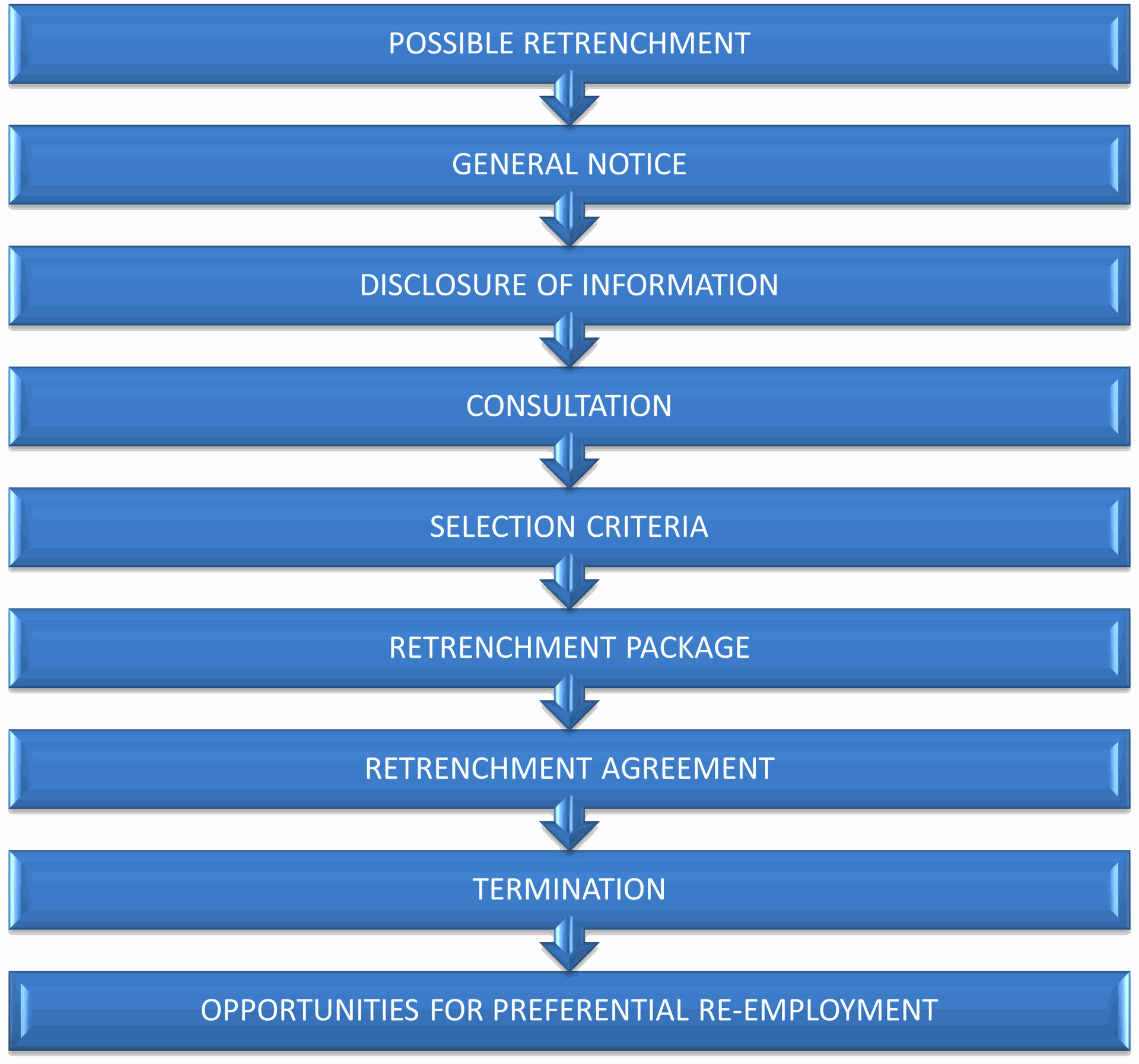Amidst the outbreak of the global pandemic of Covid-19, some employers have had to reduce the size of businesses or to shut down operations. This necessitates cutting down on the number of employees. However, the presence of this crisis does not exonerate an employer from fulfilling their legal responsibilities when it comes to retrenchment.
Below is a summary of what an employer needs to know when it comes to retrenchment.
Termination by reason of operational requirements is commonly known as retrenchment or redundancy. It is the termination of employment solely due to the operations of the employer and not due to any reason caused by the employee. (Section 38, ELRA)
As soon as the retrenchment is contemplated, the employer is tasked to give notice to the employees. This notice goes out to:-
- Any recognized trade Union
- Any registered trade union with members in the workplace not represented by a recognized trade Union
- Any employees not represented by a recognized or registered trade union (Section 38 (1) (d) ELRA)
This notice has to contain the pertinent information as stipulated by law. The notice has to be a minimum of 28 days. (Section 41 (1) (b) ELRA)
The procedure for retrenchment is quite long and cannot be adequately covered this labour law update. However, the law requires an employer to carefully follow the procedure in retrenchment and to ensure that retrenchment was considered only as a last resort. Together with this being the case, there are five important things an employer must consider when contemplating retrenchment.
(a) Reasons for retrenchment
These must be as according to the law and must be genuine so as to be understandable to the employees.
(b) Language during consultation
Since retrenchment is at no fault of the employee, the language used must be friendly and not harsh so as to facilitate reaching an amicable conclusion.
(c) Consultation
The law requires consultation to be done with the employees and/or their unions. Ths has to be done effectively and in a transparent manner so as to involve a smooth transition.
(d) Selection criteria
The selection of employees who will have to be retrenched has to be clear and transparent. The law proposes criteria such as last in first out (LIFO), the need to retain key jobs, experience or special skills, affiirmative action and qualification
(e) The retrenchment benefits/entitlements
The package to be received upon retrenchment must be clearly states so that other employees may volunteer for the retrenchment exercise without waiting for the selection criteria to be set. There are however minimum legal requirement as stated in our Labour Relations Update Issue on Terminal Benefits. (Rule 23 Code of Good Practice GN 42/2007). In the absence of a collective bargaining agreement or clearly stated package in the Contract or policies of the employer; the employee is entitled to:
- Notice or payment in lieu of notice – 1 month
- Any accrued leave
- Severance Pay
- Repatriation to place of recruitment
- Salary to the last day worked
- Any other benefit or package negotiated.
In brief the steps of retrenchment are as follows:
